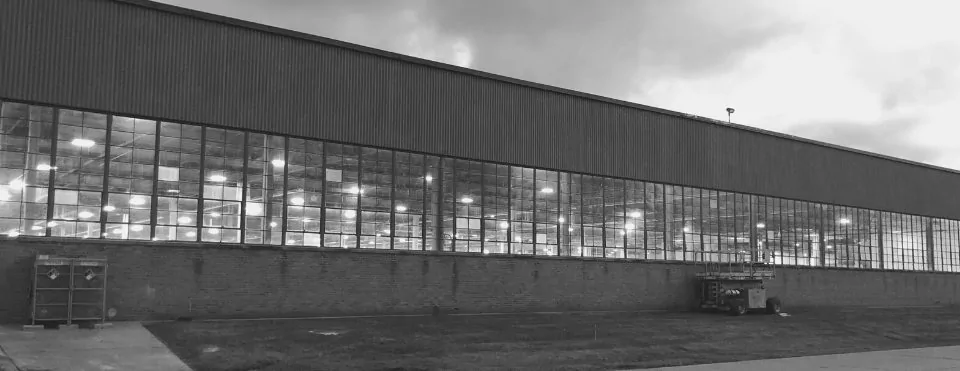Electric Heat vs Heat Pumps
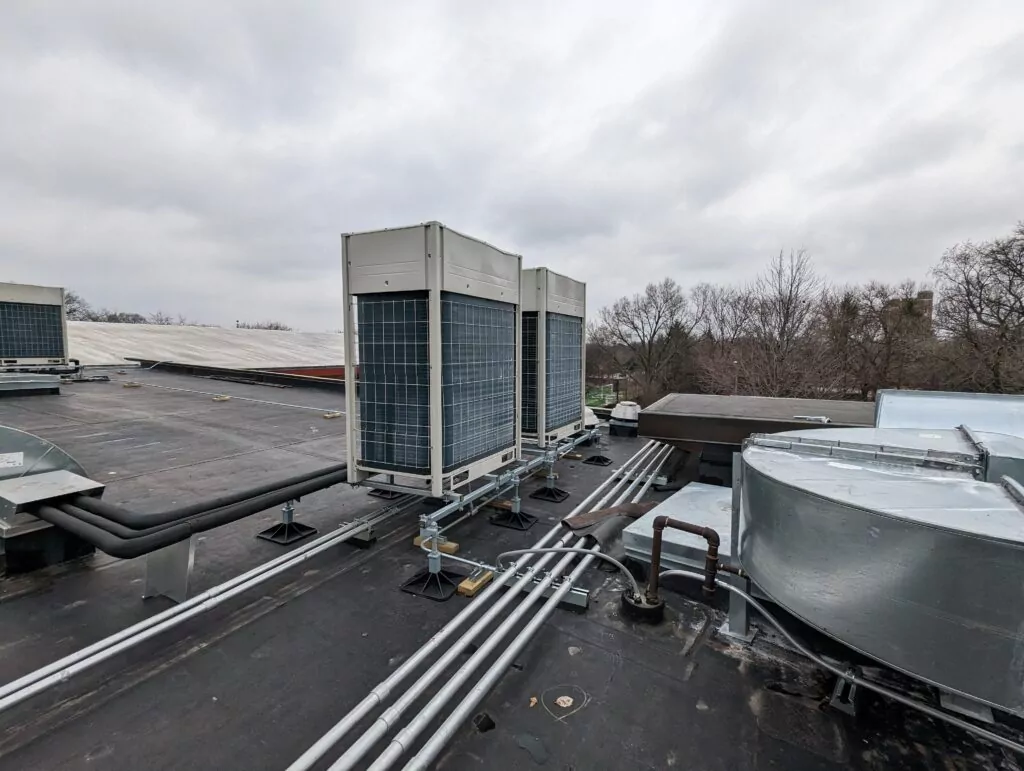
Jun 13 2023
We recently had an experience where a customer decided to go with a traditional heating and cooling system upgrade over a Very High Efficiency HVAC upgrade. A Very High Efficiency HVAC system is an ERV (Energy Recovery Ventilator) combined with a VRF (Variable Refrigerant Flow) Heat pump system. Combining these two systems brings in plenty of fresh outside air, but allows you to design a smaller heat pump system since the energy is recovered in the outgoing air. In fact, these systems can save up to 80% on energy costs and have a huge benefit in reducing the carbon footprint of a building.
I realized through this experience that we failed to educate the customer fully on the difference between electric heating systems vs VRF heat pump technologies. When the project was considered by the board, one of the board members was very critical of electric heating for buildings, due to a previous expensive experience in building operations. While both electric resistance heating use electricity as a primary source of power, they are very different in energy usage, technology and cost to operate.
What is Electric Resistance Heating?
Electric resistance heating works on a simple principle: the conversion of electrical energy into heat through resistance. It’s like a glorified toaster element, albeit more sophisticated. Here’s the breakdown:
The Resistor: The core of electric resistance heating is a material with high electrical resistance, like nichrome, nichrome, or tungsten. When electricity flows through this material, it encounters opposition, causing tiny vibrations within the atoms. These vibrations translate into heat.
The Energy Conversion: The amount of heat generated depends on two factors: * Resistance: Higher resistance leads to more heat generation. Think of it like a narrower pipe – the water has to push harder, generating friction and heat. * Current: More current passing through the resistor creates more collisions and friction, leading to even more heat.
Transferring the Heat: Once the resistor gets hot, it needs to transfer the heat to its surroundings. Different appliances do this in different ways: * Space heaters: Fans blow air over the hot element, warming the air that circulates and heats the room. * Baseboard heaters: The hot element warms a metal plate, which radiates heat into the room. * Electric furnaces: Similar to space heaters, a blower pushes air over a series of hot coils, warming the air that gets distributed through ducts.
Environmental Applications of Electric Resistance Heating:
Beyond simple heating, electric resistance heating also has applications in environmental remediation. By passing current through contaminated soil, the heat generated can evaporate pollutants, allowing for easier extraction and treatment.
Key points to remember:
- Electric resistance heating is simple, reliable, and efficient (almost 100% of the electricity is converted to heat).
- It doesn’t require combustion, eliminating fumes and making it suitable for indoor use.
- However, it can be expensive due to the high cost of electricity compared to other heating sources like natural gas.
What is a Heat Pump?
Heat pumps are versatile and efficient systems that can provide both heating and cooling to your building, using the same basic principle as your refrigerator or air conditioner. While historically, they are not made for cold weather, the technology has improved and they now work up to 85% of capacity down to negative 10 degree Fahrenheit. Brrrrr. Here’s how they work:
The Magic of Refrigerant
At the heart of a heat pump lies a special liquid called refrigerant. This refrigerant can absorb and release heat as it changes between its liquid and gaseous states. It’s like a heat taxi, picking up warmth in one place and dropping it off somewhere else.
Think of as you boil water. It takes a lot of heat to do this, usually from a natural gas or wood fire. But, if you have a refrigerant change state because of pressure changes from liquid to gas – it still takes a lot of heat (or absorbs a lot of heat). Remember that old formula, PV = nRT?
Two Modes, One System
A heat pump can operate in two modes, driven by a reversing valve that directs the flow of the refrigerant:
- Heating Mode: In this mode, the heat pump acts like a reverse air conditioner.
- The outdoor unit’s evaporator coil absorbs low-grade heat from the outside air, even when it’s extremely cold.
- The compressed refrigerant carries this absorbed heat to the indoor unit’s condenser coil, where it releases the heat, warming the air that circulates in your home.
- Cooling Mode: This mode works like a traditional air conditioner.
- The indoor unit’s evaporator coil absorbs heat from the warm air inside your home.
- The compressed refrigerant carries this heat to the outdoor unit’s condenser coil, where it’s released into the outside air, cooling your home.
- Heat Recovery Mode: There can even be a super cool third mode, where the system can move heat from one space inside the building to another. It can do this with a small box that the gas and liquid can change state within the building, called a branch selector box.
Beyond Air: Different Heat Sources
While some heat pumps use outdoor air as their heat source, others can tap into other sources, like the ground or water:
- Ground-source heat pumps: These extract heat from the Earth’s constant underground temperature, making them highly efficient, especially in colder climates. This is geothermal heating and cooling – something more efficient than air-sourced heat pumps, but also more expensive and requires more land usage. You can go either very deep, or very long and wide in a property to get the proper surface area to heat and cool a building.
- Water-source heat pumps: These use water from lakes, rivers, or wells as their heat source. In Chicago, it is illegal to use water from Lake Michigan, although what a wonderful source of cooling that would be in the summer-time.
Benefits of Heat Pumps
- Energy Efficiency: Compared to traditional electric heating or gas furnaces, heat pumps can be significantly more efficient, translating to lower energy bills.
- Versatility: They provide both heating and cooling in one system, eliminating the need for separate units.
- Environmental Friendliness: Heat pumps don’t generate heat themselves, they transfer it, making them a more sustainable option for reducing your carbon footprint.
Things to Consider When Considering Heat Pumps
Heat pumps can have a higher upfront cost than traditional systems. While prices are dropping on the equipment, labor is critical to connect all of the refrigeration lines needed. This is typically done by brazing, which is done with a small torch that permanently connects the copper lines where the refrigeration lines run. This is important as refrigeration gases themselves are global warming gasses, so making sure they do not leak is critically important.
Heat pumps are also more electrical and refrigeration components that traditional HVAC equipment. For this reason, many contractors are unfamiliar with the process of installing them. As more and more contractors become confident, the prices will decrease. In fact, we really think of heat pumps to be more akin to walk in coolers and freezers, with a lot of electrical and communication lines running between them. It is important to have a good partner to set up the system correctly from the beginning.
Some air-source heat pumps may have reduced efficiency in extremely cold climates. It is important to select the correct version of the heat pump for your climate. Daikin, the original company to first release the VRF system in the 1980s, has several lines of commercial equipment. The Emerion, for example, has 85% heating at 0 degrees Farenheit. That is great, but at -10 degrees Farenheit, the system will not produce as much heat. This means you either need to accept that your building will be cold, have another supplemental system to provide heat, or put in way more BTUs of heating in your system than you need 99% of the year just for the extreme cold protection.
However, the Aurora system allows 85% heating down to -13 degrees Fahrenheit, a much more effective system for cold weather climates. This small difference in units from the same manufacturer can really impact both comfort, but also cost on the number of units needed for your system. While more and more engineers are getting comfortable with heat pumps, it is nice to work with someone experienced and confident in VRF heat pumps.
Overall, heat pumps are a smart choice for those looking for an energy-efficient and versatile heating and cooling solution. If you’re considering a heat pump, consult with a qualified HVAC professional or design engineering firm to assess your needs and find the best system for your building.
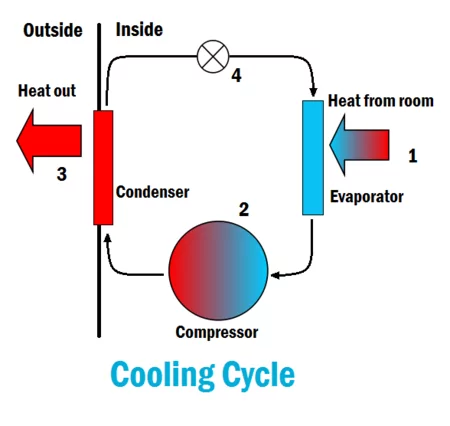
Source: Energyeducation.ca
Which One Costs More to Operate?
Electric resistance heat costs far more than heat pumps to operate. While they are efficient in theory, they take heat burned from natural gas at a power plant far away and run it through power lines to get to your building. Over time and distance, that energy is lost. A heat pump, however, just transfers heat from outside a building to the inside during the winter. This is much more local, and therefore, less costly in almost every application.
Is a Heat Pump Good for the Environment?
No matter how efficient a natural gas or propane heat system is, it always releases CO2. Most commercial rooftops have packaged rooftop units, and those are only 80% efficient in using the natural gas to create heat. 20% is wasted, but again – all of it releases climate changing gases.
In our local grid in Illinois, 53% of our energy comes from Nuclear Power. While it has it’s own concerns, it does not release CO2. There is also 20% wind powering our grid, along with increasing solar PV and some small amount of hydroelectric in our state. That all adds up to almost 80% of our electricity being clean in terms of global warming gasses – quite a feat for a midwestern state. So heat pumps are incredibly good for the environment in general, and twice as good in a state like ours with plenty of clean energy. In fact, most of our energy usage peaks in the summer with heavy Air Conditioning, leaving the heating season with more capacity to add heat pumps.
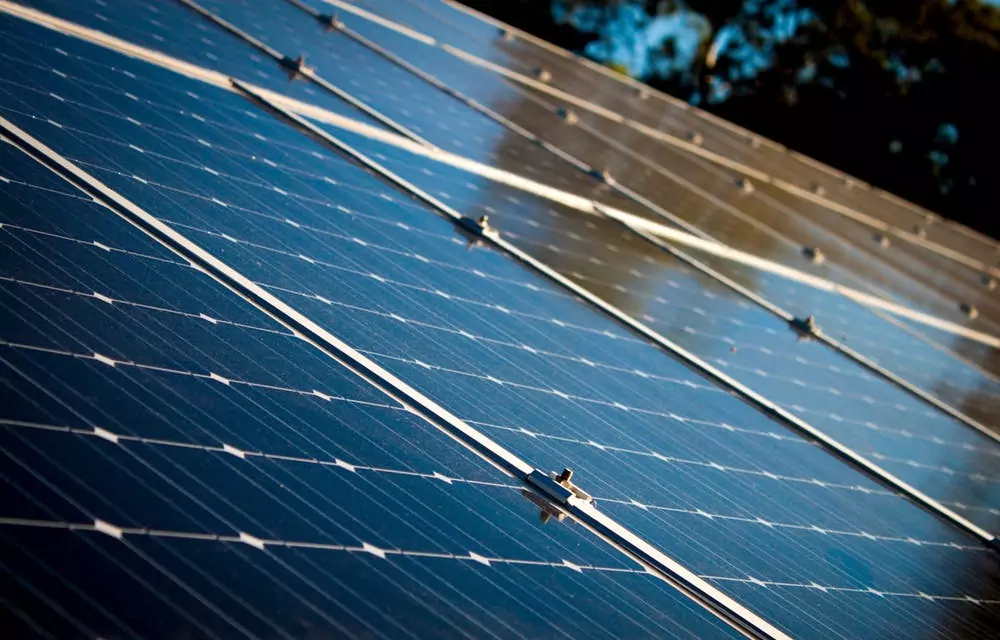
What if I have solar PV on my building?
Solar PV is a great partner to heat pumps, far better than electric resistance. For the same number of solar panels, you could put a lot more heat into a building as compared to electric resistance, at least three times as much in theory. Or, if you already have heat pumps, you would need far less solar PV panels to provide enough energy to heat your building.
And, but adding the infrastructure now in terms of copper lines and communication systems, you will only get more heating bang for your buck as the systems increase in efficiency, both solar and heat pumps.
Conclusion
As we move toward new technologies to solve some of our greatest challenges, we will need to focus on education to get momentum. Heat pumps do work in cold weather – we have the data and the local experiences to prove that. VRF heat pump systems are also far different from traditional electric heating sources in technology, and they are far less expensive to operate in terms of electricity costs to warm a building.
VRF Heat pumps are electric driven, but they are not electric heating. They are using electricity to bring heat from outside a building to the inside (and vice versa in the summer). If a customer has electric heating right now and converts to a VRF heat pump system, the cost to warm the building will drop significantly, up to 70% reduction. And, if a customer has natural gas heating and converts to a VRF heat pump system, the heating costs will also reduce by about 30-40% in our experience. But the true winning is in reduction of global warming gasses, especially in a very clean state like Illinois.
Finally, and possibly most importantly, we have found that the Variable Flow Refrigeration aspect of heat pumps leads to a far more comfortable experience for the client vs traditional electric resistance heating, since it can give you a very granular temperature control of each room. And to make a transition to decarbonized heating systems, comfort is the key.
Featured Posts
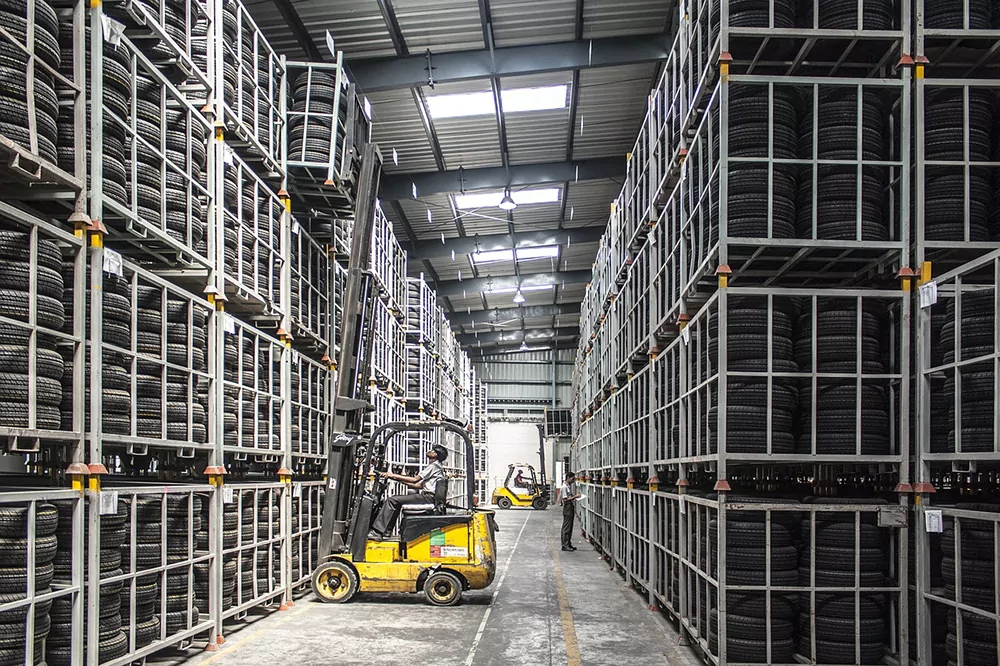
Mar 05 2025
Cut Warehouse Costs With Proven Commercial Energy Efficiency Upgrades
Warehouse operators are relentlessly pursuing smarter ways to reduce costs, improve commercial energy efficiency, and keep productivity moving forward. But what’s the best way to achieve this? As experts in commercial energy efficiency, Verde has the…
Continue Reading >
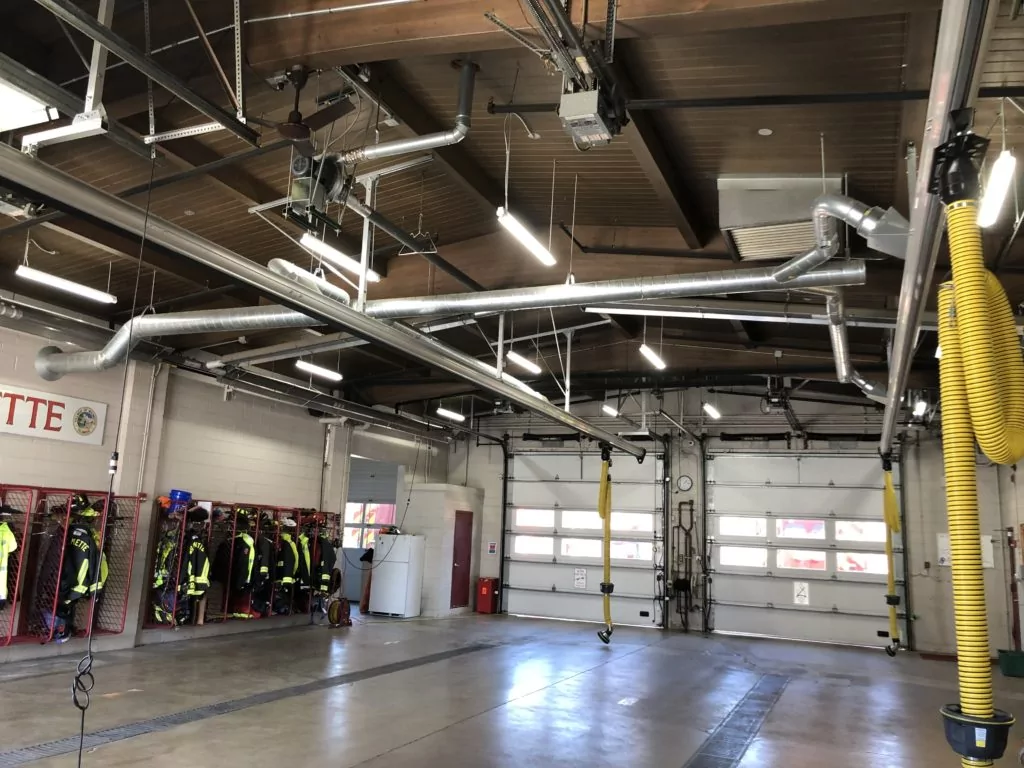
Mar 15 2021
Energy Savings Formula
In 2002, I became a firefighter in the north suburbs of Chicago. I was young and idealistic - loving almost every part of the job. However, I had another secret passion - sustainability. In addition…
Continue Reading >
Related Articles
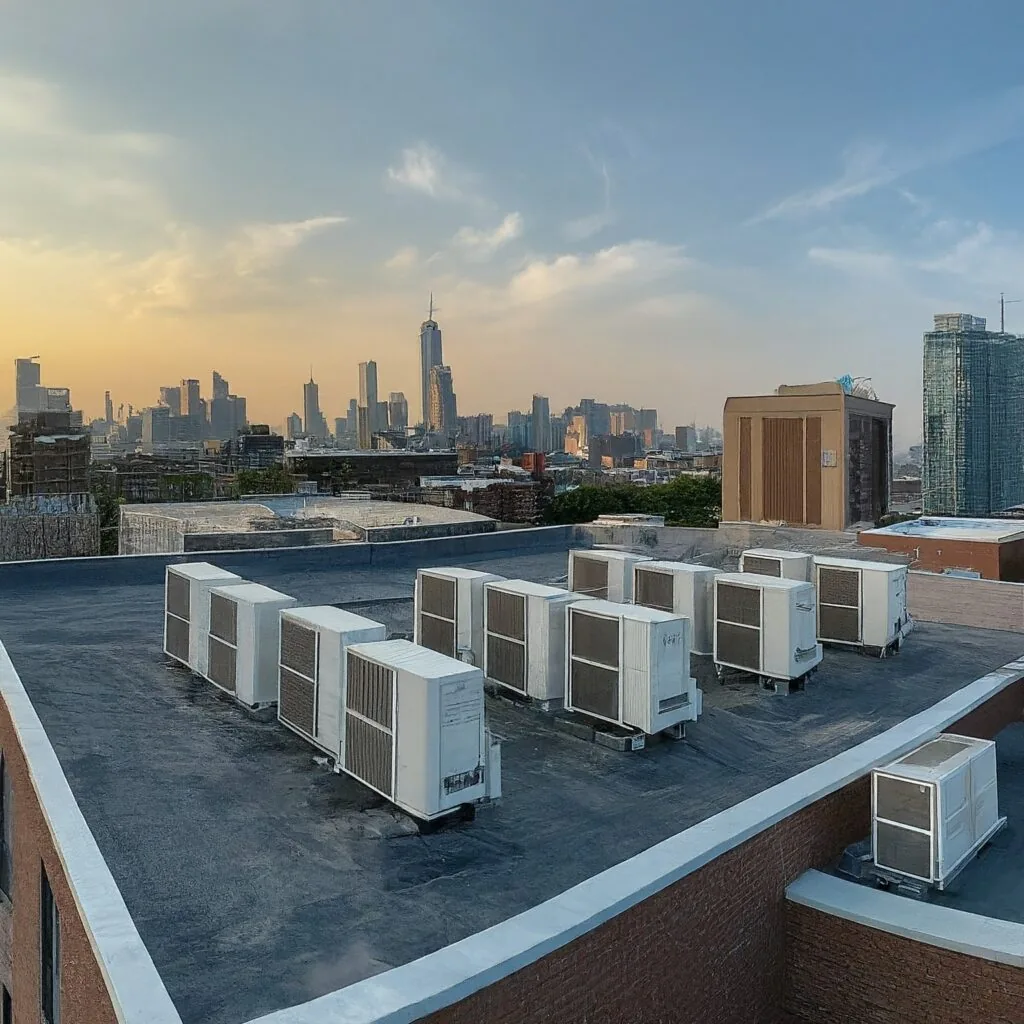
Sep 23 2024
Utility Heat Pump Incentives for HVAC
Dual fuel heat pump packaged rooftop units (RTUs) offer a versatile and energy-efficient solution for heating and cooling commercial buildings. By combining the efficiency of a heat pump with the power of a gas furnace,…
Continue Reading >
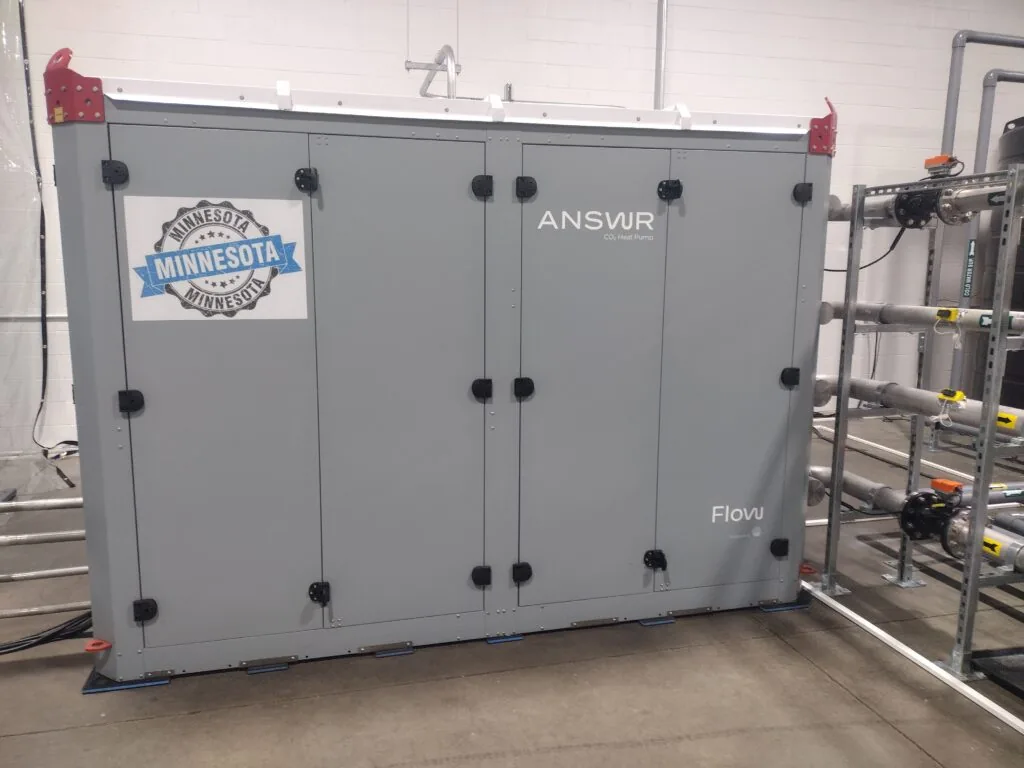
Apr 29 2024
What is a CO2 Heat Pump?
Traditional Heat Pumps use refrigerant to change stages based on pressure, transferring heat from inside a building and out (and vice versa in the winter). One of the big costs to heat pumps is Freon,…

